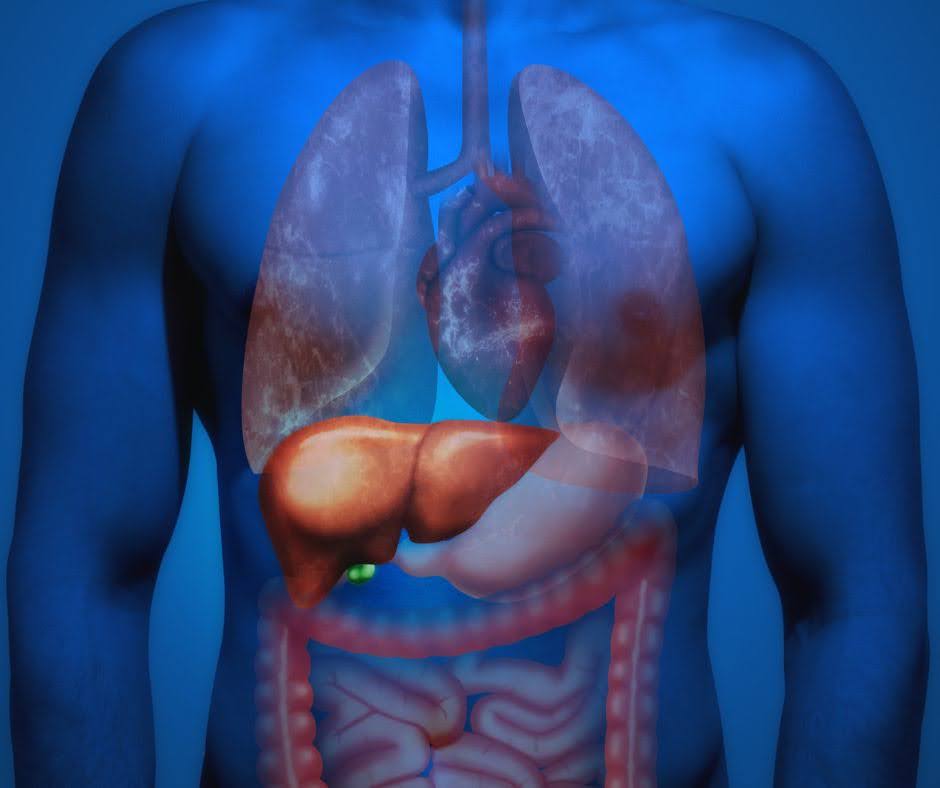The liver stands as a crucial organ within the human body, performing a multitude of functions essential for maintaining overall health and well-being. From metabolic processes to detoxification, its influence extends far beyond its physical size. Additionally, in osteopathic philosophy, the liver’s health and function are regarded as integral to maintaining overall balance and harmony within the body.
Anatomy and Physiology
The liver, located in the upper right portion of the abdominal cavity, is the largest internal organ in humans. It weighs approximately three pounds in adults and is reddish-brown in colour. Structurally, it comprises two main lobes, each further divided into smaller lobules. These lobules contain liver cells called hepatocytes, along with various specialized cells responsible for its functions.
Functions of the Liver
- Metabolic Functions
The liver plays a central role in metabolism. It regulates blood sugar levels by storing excess glucose as glycogen and releasing it when blood sugar levels drop. It also synthesises proteins essential for blood clotting and transports fats throughout the body.
- Detoxification
One of the liver’s primary functions is detoxification. It processes and removes toxins, drugs, and metabolic waste products from the bloodstream. Hepatocytes within the liver metabolise these substances into less harmful compounds, which are then excreted via bile or urine.
- Bile Production
The liver produces bile, a greenish-yellow fluid necessary for the digestion and absorption of fats in the small intestine. Bile is stored in the gallbladder and released into the digestive tract when needed.
- Storage
Apart from storing glucose, the liver stores vitamins, minerals, and other essential nutrients. It also stores iron, releasing it into the bloodstream when needed for red blood cell production.
Impact on Overall Health
The liver’s functions are vital for maintaining overall health and homeostasis within the body. Any dysfunction or impairment in liver function can lead to serious health consequences, including:
Metabolic Disorder
Diabetes mellitus, obesity, and metabolic syndrome are closely linked with Non-alcoholic fatty liver disease (NAFLD). Other metabolic disorders involing the liver include hemochromatosis and, Wilson Disease.
Toxicity
Impaired detoxification can cause the accumulation of toxins and metabolic waste products in the bloodstream, leading to various health problems, including liver damage and systemic toxicity.
Digestive Disorders
Reduced bile production can impair fat digestion and absorption, leading to digestive issues such as diarrhea, bloating, and malnutrition.
Osteopathic Perspective
In osteopathic philosophy, the liver is viewed as a crucial organ for maintaining the body’s dynamic balance and health. Osteopaths believe that the liver’s health directly influences the function of other organs and systems through interconnected pathways of the body.
Osteopathic treatment approaches often focus on restoring and maintaining the optimal function of the liver and other related structures through manual therapy techniques, dietary recommendations, and lifestyle modifications. By addressing any restrictions or dysfunctions within the musculoskeletal system that may impact the liver’s function, osteopaths aim to promote overall health and well-being.
Final Thoughts
The human liver serves as a powerhouse of essential functions critical for maintaining overall health and vitality. From metabolism and detoxification to digestion and nutrient storage, its influence permeates throughout the body. In osteopathic practice, the liver’s health is viewed as integral to maintaining balance and harmony within the body, underscoring its importance in holistic healthcare approaches. Understanding and nurturing the liver’s function are paramount for achieving optimal health and well-being.
Resources
- Liver: Anatomy and Functions, Johns Hopkins Medicine
- University of Nottingham, Detoxification
- Dewidar B, Kahl S, Pafili K, Roden M. Metabolic liver disease in diabetes – From mechanisms to clinical trials. Metabolism. 2020 Oct;111S:154299. doi: 10.1016/j.metabol.2020.154299. Epub 2020 Jun 20. PMID: 32569680; PMCID: PMC7305712.
